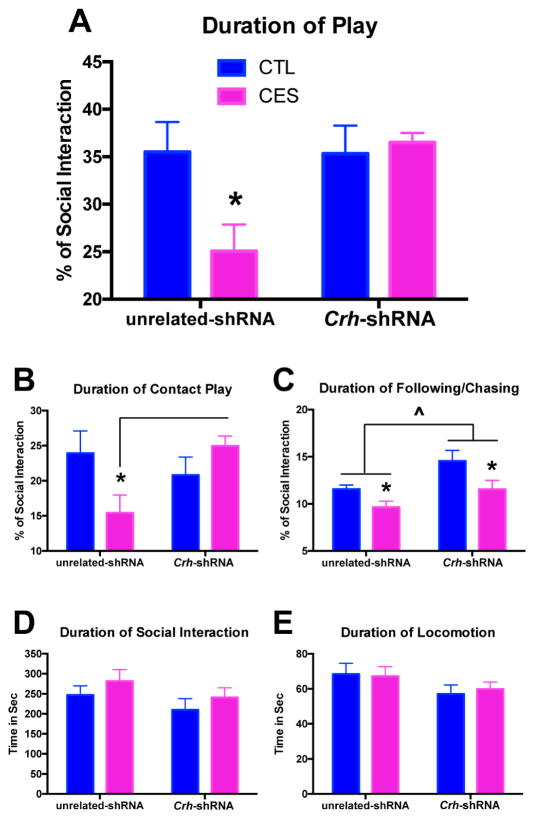Figure 6.
CRF reduction in the ACe rescues CES rats from deficits in social play. (A) As a second, independent measure of anhedonia in rodents, we assessed the duration of play behavior during a social interaction test. CES rats provided with an unrelated-shRNA engaged in lower durations of play behaviors. In this measure of pleasure as well, Crh-targeting in the ACe was sufficient to rescue play behavior in CES rats. Of the multiple play behaviors measured, CRF reduction specifically rescued contact play such as pinning, pouncing, kicking, boxing and wrestling in CES rats (B), with little effect on deficits in playful following/chasing (C). Overall, Crh-shRNA did slightly increase the duration of following/chasing behavior, regardless of early-life experience. (D) Neither CES nor Crh-shRNA altered the total duration of social interaction, which includes play behavior as well as non-play activities such as anogenital investigation. (E) Neither CES nor Crh-shRNA altered the total duration of locomotion, or walking around the apparatus. Values are expressed as mean ± SEM (n = 5–6 rats per group; *p < 0.05).

